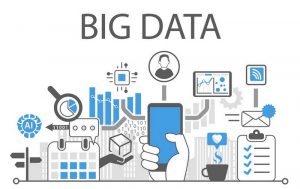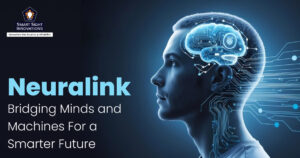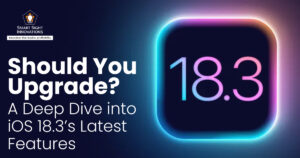 As a renowned industrialist recently said, data is the new oil for the world. Database management platforms play a crucial role in saving, editing, and retrieving this information as and when required.
As a renowned industrialist recently said, data is the new oil for the world. Database management platforms play a crucial role in saving, editing, and retrieving this information as and when required.
A Quick Introduction To Big Data
An enormous volume of data is generated by smart device sensors, phones, machine logs, social networking sites, and IoT devices every minute. The rate of generation of data and its volume is exponentially high. If the generated information consists of a high degree of veracity, value, quantity, variety, and velocity, it can be termed as Big Data.
Data can be either in a structured or unstructured format. For example, the information obtained from mobile phones, social media posts, and log files does not have any model or predefined schema. Thus, it is known as unstructured data. On the other hand, the structured format consists of information stored in database columns with specific models or schema.
The information storage system should be able to scale up quickly. The unprecedented amount of data generated daily needs advanced technology tools for processing. Firms need Big Data systems that can handle a tremendous amount of data, and provide the necessary IOPS (Input-Output-Operations-Per-Second) rate as per the requirements of various analytical tools that the organization uses.
Need of Big Data
Companies have been storing and studying a large amount of data for decades. Earlier, it was stored and analyzed using spreadsheets and graphs. Thanks to analytical systems, the unstructured data is stored, analyzed, and translated into actionable insights within minutes. Today, machine learning and data analytics tools can scan social media posts about the brand and provide business insights instantly.
Put simply; data can help in resolving potential customer concerns, making complex business decisions, optimizing business processes, studying the competition, and assessing the market reaction for various products.
Relational and Non-Relational Databases
Relational databases (SQL) store the information in a format consisting of rows and tables. Such databases function using the Structured Querying Language (SQL). They work perfectly with data analysis applications and those that manage complicated querying. MySQL, Oracle, Microsoft Azure SQL are the most popular relational databases.
Some of the relational databases also fall into the Relational Database Management System (RDMS) category. The RDMS program is the best solution for adding, updating, searching for information in the database. It is famous as it offers a visual representation of the stored data.
On the other hand, non-relational databases (NoSQL) are systems that store data in a document or one construct form. It is perfect for projects that involve the handling of massive amounts of data in unstructured form. It offers more flexibility to designers compared to relational databases. However, the information is not stored in a highly organized manner. Some of the most renowned non-relational database systems are MongoDB, Apache CouchDB, and Oracle NoSQL. Let’s take a look at some of the renowned database systems preferred by engineers around the world.
1. MongoDB
MongoDB is a NoSQL database that’s been in use for two decades. It is a document-oriented type of database. The system can store documents of varied sizes and content. Engineers do not need to define a schema beforehand. The database is easily scalable; thus, it can save millions of documents and run 100+ nodes.
2. MySQL
The database management system does not need much of an introduction, as it is the most trusted SQL system around the world. MySQL does not save information in one big storeroom; it stores data in separate tables, rows, columns.
3. Apache Cassandra
A developer looking for a decentralized, non-relational, open-source storage system that supports multiple data formats, and replication of data across numerous data centers should consider opting for Apache Cassandra. It works with cheap commodity hardware and is linearly scalable. The database uses Google’s Bigtable data model and gets the best from Amazon’s Dynamo distribution system. Companies like Cisco, Netflix, Twitter, Facebook, and eBay use the same.
4. Azure SQL
Microsoft Azure SQL is a cloud-based SQL database service. It supports multiple operating systems and helps users in computing, storing data using a single solution. The system transaction time remains faster, even while handling extensive data. It helps developers in developing and monitoring apps quickly.
5. Apache HBase
At times, firms may need random access to read/write information in the database. NoSQL Hadoop database (HBase) offers the same. The database can be scaled out horizontally and handle high table-update rates. Apache HBase uses Java as the programming language. It remains ahead of other NoSQL databases due to its ability to provide superb consistency on writes and reads. Apache HBase is an open-source project, and Apache Software Foundation manages the same.
Are NewSQL Databases Better Than NoSQL?
NewSQL combines the horizontal scalability of NoSQL and the ACID (atomicity, consistency, isolation, durability) provided by relational database management systems. For understanding the functionalities and benefits of NewSQL, it is crucial to know more about OLTP and OLAP.
Higher adoption of the internet has resulted in a more significant number of real-time interactions, and this is where the Online Transaction Processing (OLTP) software category comes into the picture. There are two categories of database software systems, OLAP (Online analytical processing) and OLTP (Online Transaction Processing).
OLAP systems play a crucial role in business intelligence operations by helping in storing a large volume of data for analytical purposes. They process a limited amount of data and focus on the read-only workload. A limited number of employees in the organization have access to these systems.
OLTP software systems are suitable for transactional data processing and can handle predefined queries raised by users. For example, the system helps in managing regular searches performed by e-commerce portal users before buying something. OLTP can handle a higher amount of queries for both read and write operations. They offer concurrency, high availability, and performance.
NewSQL databases focus on hybrid workloads, including OLTP. Legacy systems cannot scale modern OLTP workloads like NewSQL that’s based on Google’s Spanner database. Some of the leading examples for New SQL databases are Vitess, Apache Trafodion, FaunaDB, CockroachDB, CluxtrixDB, and TiDB.
There are multiple variations when it comes to the internal design of NewSQL databases. However, they can modify the content, execute transactions, and ingest new information using SQL.
Are you searching for experts who can understand your firm’s custom database solutions needs and recommend the best storage as well as analytical systems? If so, you should undoubtedly contact and discuss your requirements with Smart Sight Innovations.













